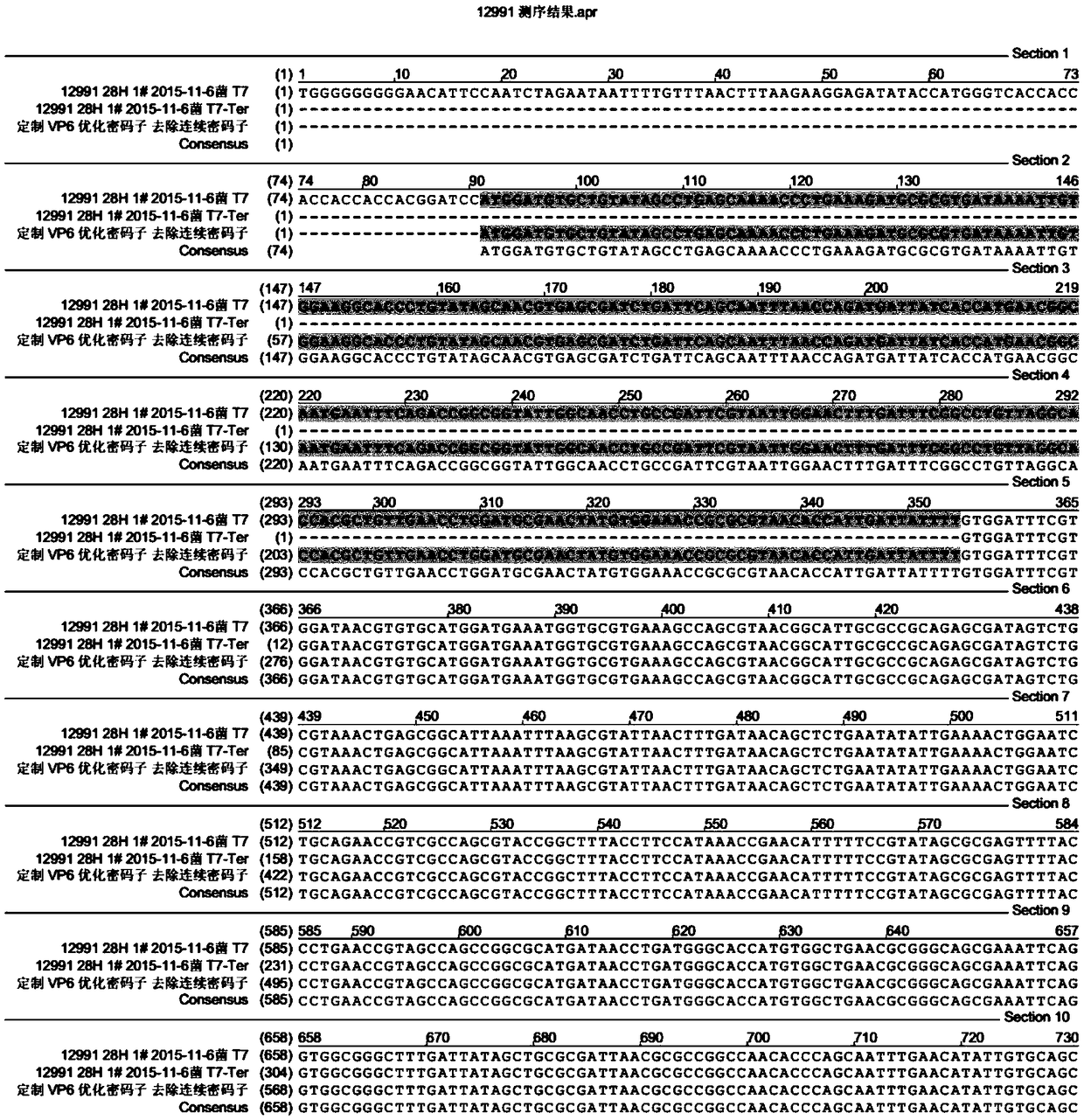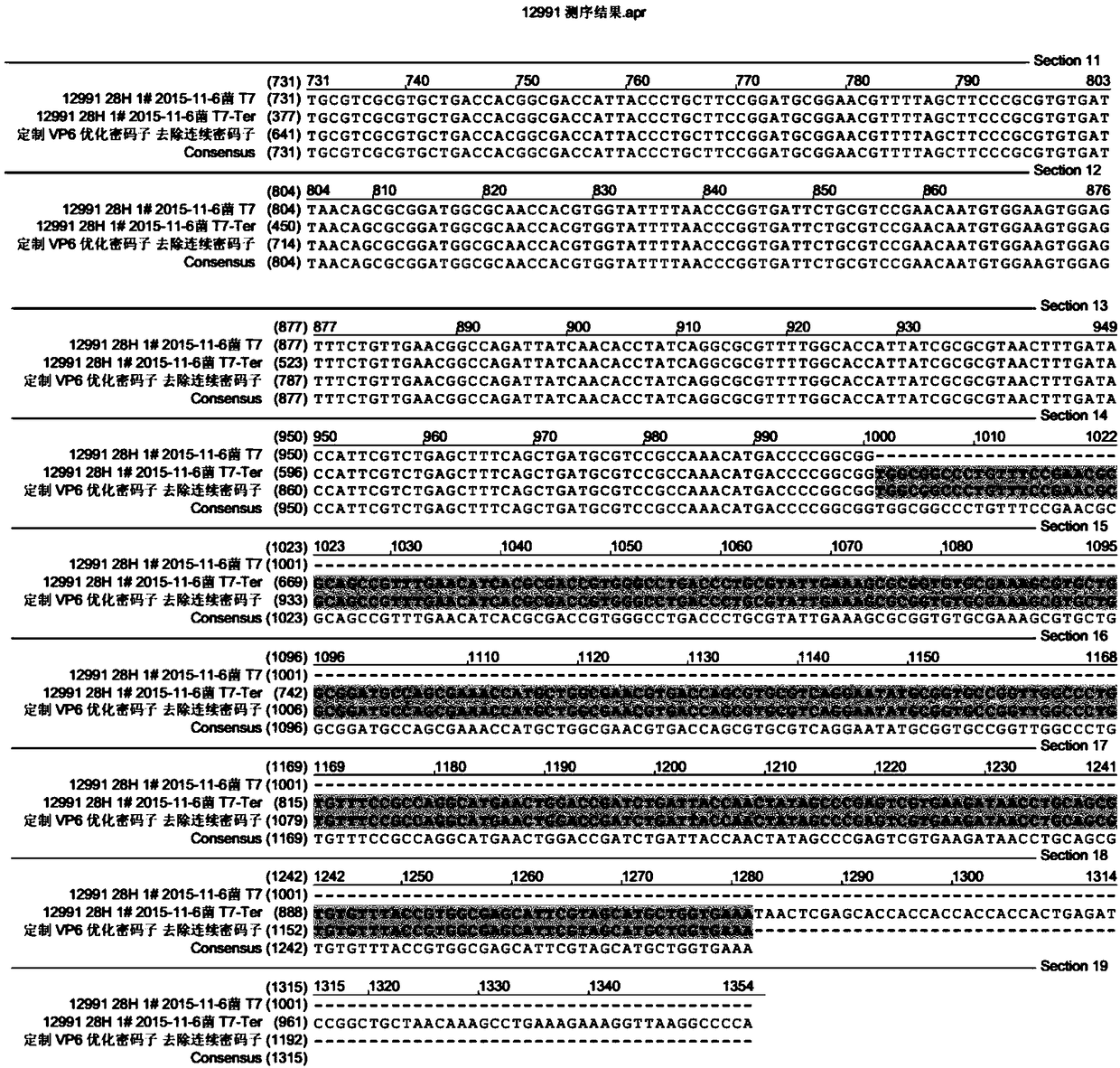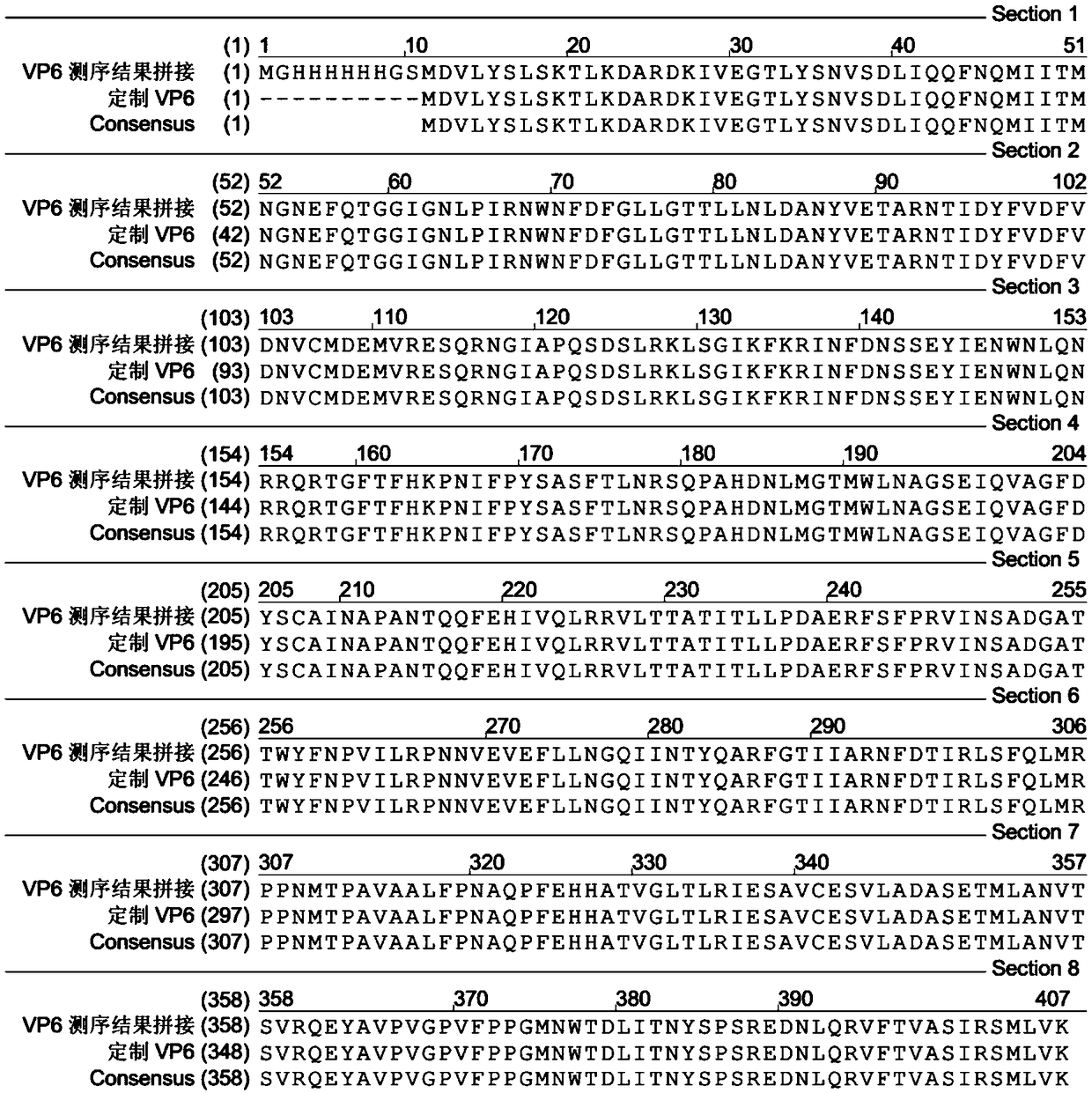Yak-derived Rotavirus recombinant VP6 protein antigen and application thereof
A rotavirus and protein antigen technology, applied in the field of genetic engineering, can solve the problem of not reducing the incidence of virus transmission, and achieve the effects of being suitable for popularization, short production cycle and improving production efficiency
- Summary
- Abstract
- Description
- Claims
- Application Information
AI Technical Summary
Problems solved by technology
Method used
Image
Examples
Embodiment 1
[0045] Example 1 Preparation of yak-derived rotavirus VP6 protein antigen
[0046] 1. Amplification of VP6 gene: Take an appropriate amount of yak-derived RVMD8 strain virus liquid, extract total RNA according to the QIAamp Viral RNA MiniKit (50) kit, and synthesize cDNA according to the instructions of the SuperScirptTMIII First-Stand Synthesis System for RT-PCR reverse transcription kit , using VP6 amplification primers to amplify two sequences of a gene fragment with a size of about 407bp (located between 931bp and 1338bp) and a gene fragment with a size of about 937bp (located between 21bp and 958bp). Use the Contig software to splice the two gene fragments together to obtain a complete ORF sequence of the VP6 gene, which is 1191bp in size. Its sequence is shown in SEQ ID NO.1, encoding 397 amino acids, and its amino acid sequence is represented by SEQ ID NO. .3 shown.
[0047] 2. Optimize the spliced VP6 gene sequence to make its codon preference close to that of Esche...
Embodiment 2
[0052] The establishment of embodiment 2 indirect ELISA detection method
[0053] 1. ELISA operating procedure Dilute the purified recombinant VP6 protein with 50 mM pH 7.6 phosphate buffer and coat it on an ELISA plate, 100 μL / well, overnight at 4°C. The coating solution was discarded the next day, and washed three times with PBST, 200 μL / well. Add 2% bovine serum albumin (BSA) as a blocking solution, 100 μL / well, 37° C. for 1 h. The coating solution was discarded, and after washing 3 times, the negative and positive sera were diluted in proportion with 1% bovine serum albumin (BSA), respectively, and added to the microtiter plate, 100 μL / well, 37°C for 1h. The liquid in the plate was discarded, and after washing 5 times, HRP-labeled goat anti-bovine IgG diluted 1:2500 with 1% bovine serum albumin (BSA) was added, 100 μL / well, 37°C for 1h. Discard the liquid in the plate, add TMB chromogenic solution after washing 5 times, 100 μL / well, develop color at 37°C for 15 minutes i...
Embodiment 3
[0095] Example 3 Immunization of mice with rotavirus recombinant VP6 protein can make it produce detectable serum detection antibodies
[0096] Twenty-five female BALB / c mice of SPF grade from 6 to 8 weeks were randomly divided into two groups, including 15 mice in the immune group and 10 mice in the blank control group. Before immunization, the blood of all mice was collected from the orbit, and serum IgG was detected by ELISA method. The vaccine is immunized with recombinant VP6 protein and mucosal adjuvant, and the immunization method is nasal drop. The dose of VP6 protein immunization at each immunization point is 20 μg / monkey, and the second immunization is carried out at an interval of 3 weeks after the first immunization. During immunization, after the mice were anesthetized with ether, 25 μl of the vaccine was dripped into each nostril with a micropipette gun, and the control group was immunized with an equal volume of sterile PBS. Orbital blood was collected once a w...
PUM
 Login to View More
Login to View More Abstract
Description
Claims
Application Information
 Login to View More
Login to View More - R&D
- Intellectual Property
- Life Sciences
- Materials
- Tech Scout
- Unparalleled Data Quality
- Higher Quality Content
- 60% Fewer Hallucinations
Browse by: Latest US Patents, China's latest patents, Technical Efficacy Thesaurus, Application Domain, Technology Topic, Popular Technical Reports.
© 2025 PatSnap. All rights reserved.Legal|Privacy policy|Modern Slavery Act Transparency Statement|Sitemap|About US| Contact US: help@patsnap.com



